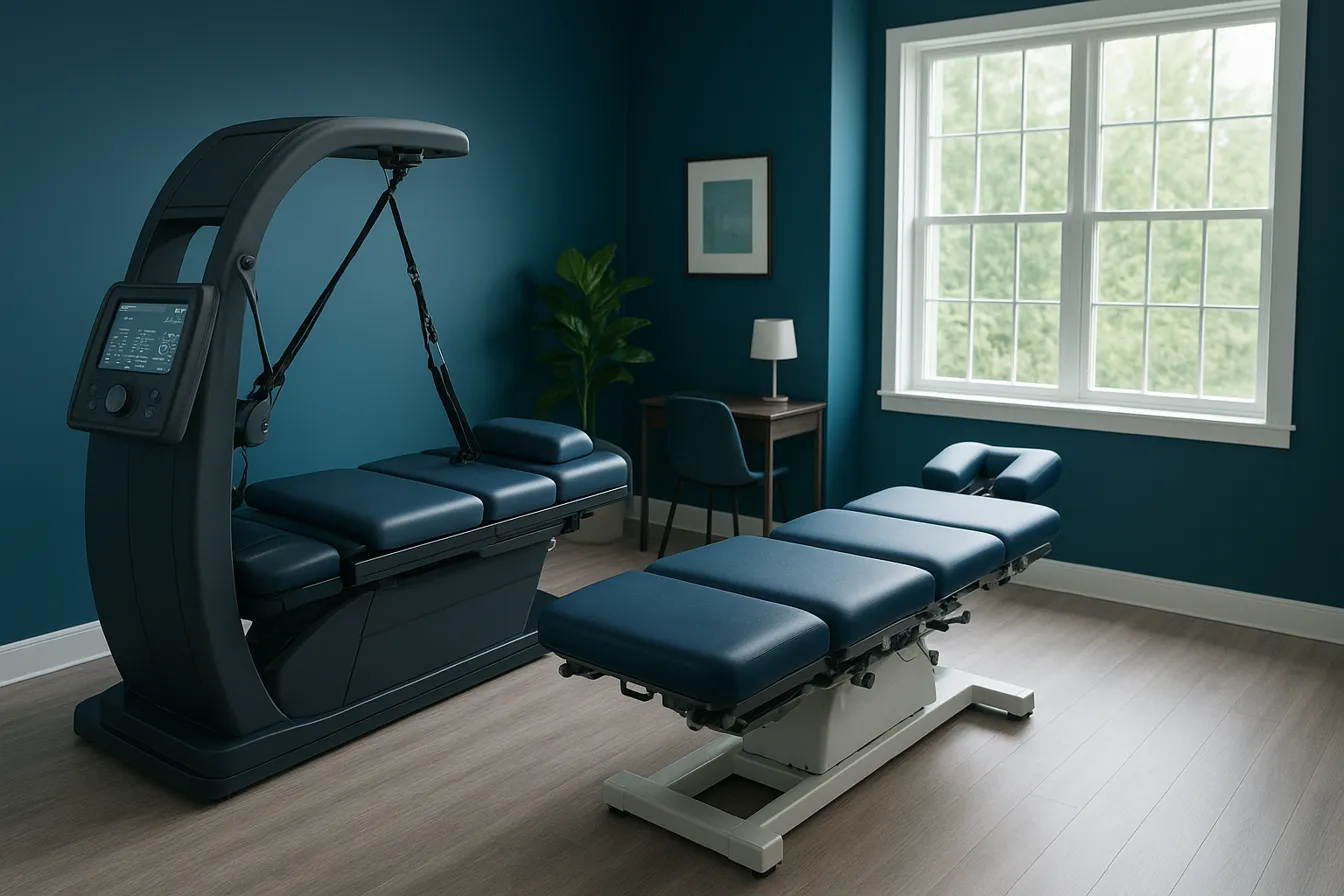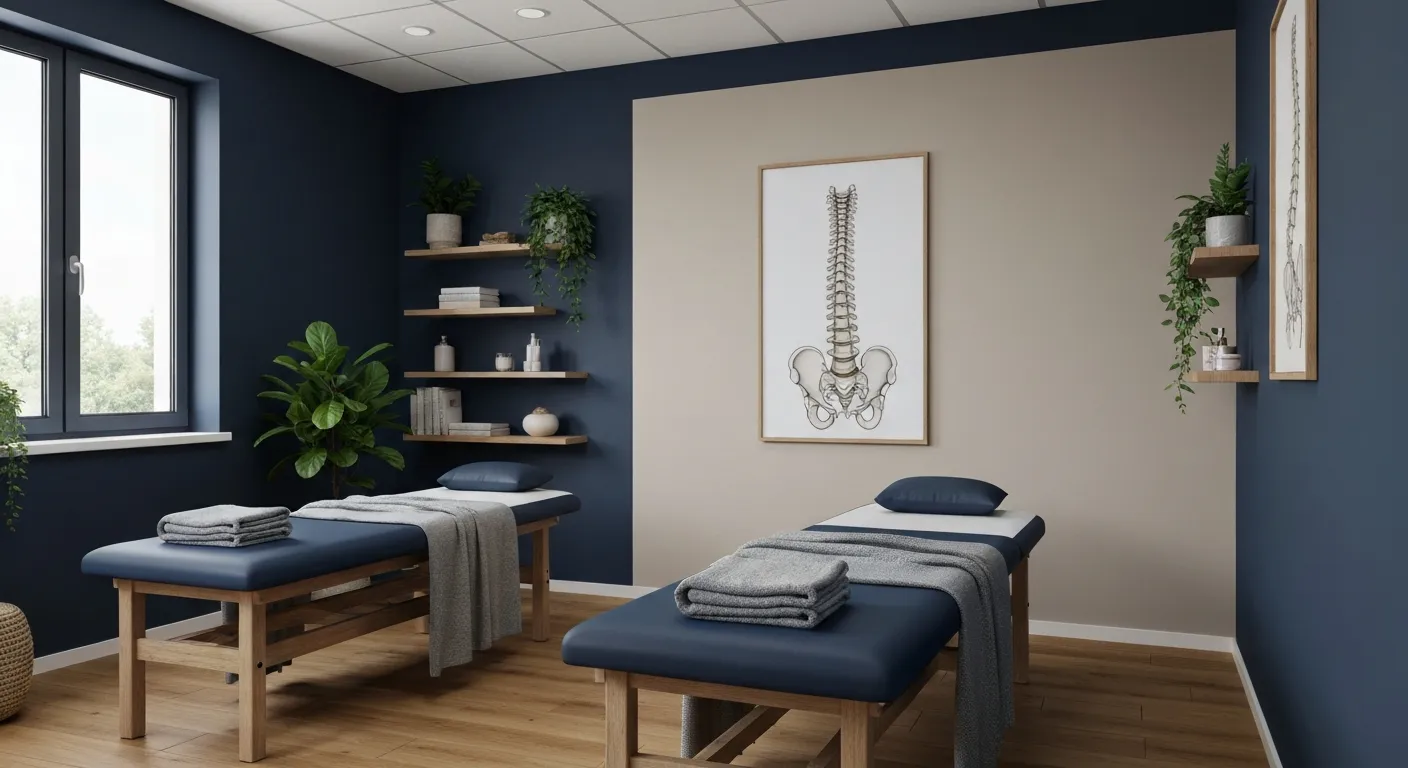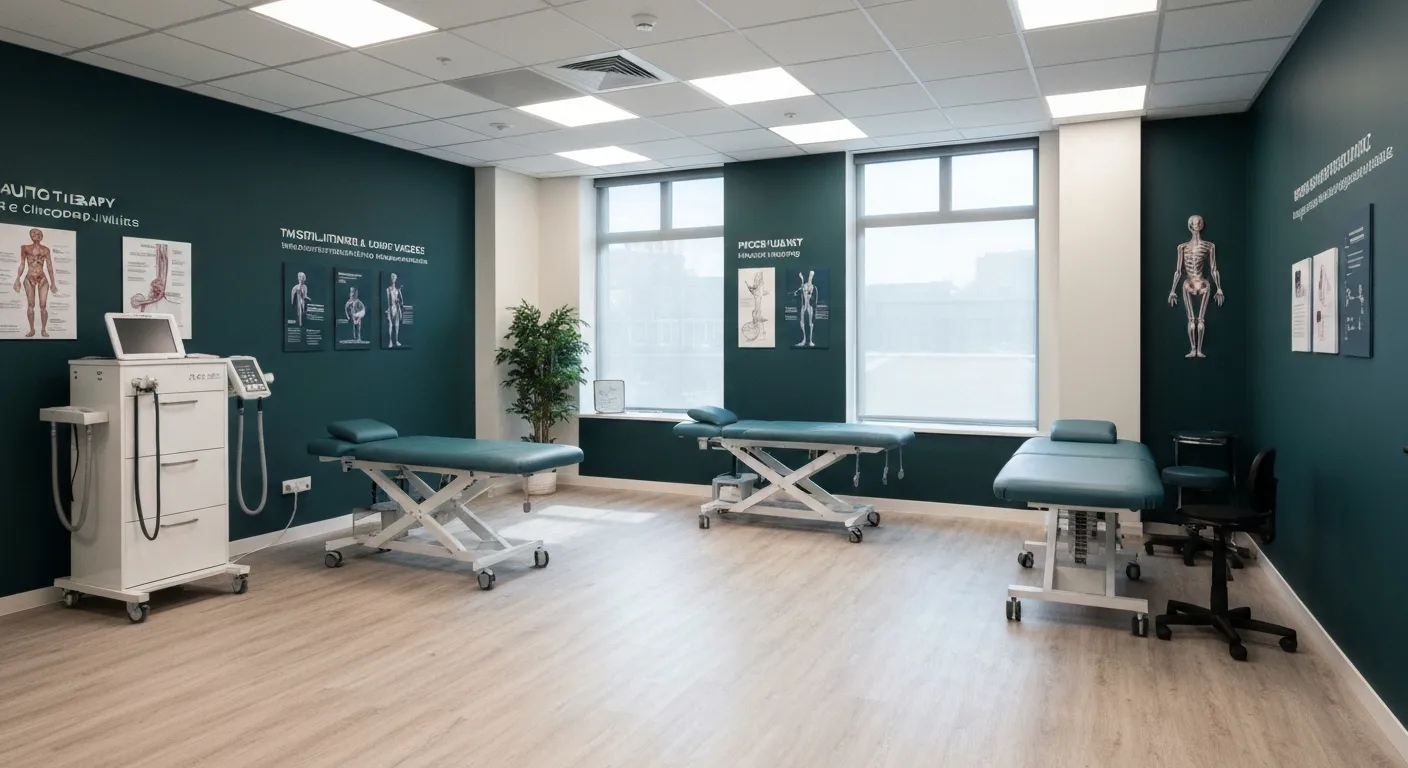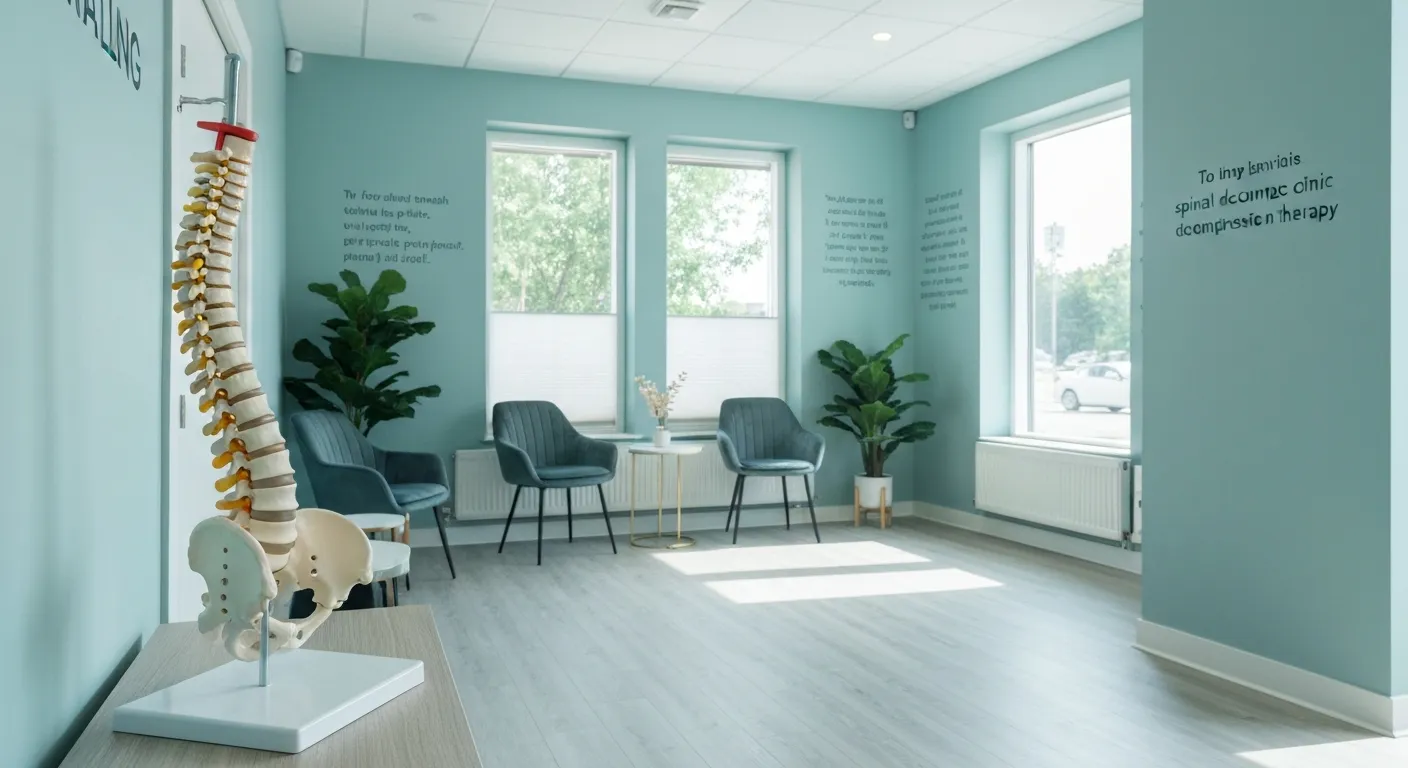Benefits of Chiropractic Care Specifically for Back Pain Relief
September 25, 2025
8 min

Exploring Chiropractic Care as an Effective Solution for Back Pain
Back pain is a widespread health concern that affects millions worldwide, often impacting quality of life and productivity. Among the various treatment options, chiropractic care has emerged as a popular, non-invasive approach focused on spinal health and pain relief. This article delves into the multifaceted benefits of chiropractic care specifically for back pain relief, exploring how spinal adjustments work, the conditions treated, evidence supporting its effectiveness, and why it can be a suitable option for many sufferers seeking lasting comfort and improved function.
Benefits of Chiropractic Care for Back Pain Relief

What are the benefits of chiropractic care for back pain relief?
Chiropractic care provides several notable advantages for individuals suffering from back pain. One of the primary benefits is the relief of pain through manual spinal manipulation, which realigns the spine and improves its function. This process helps decrease muscle tension, reduce nerve irritation, and promote better body alignment.
Many patients report feeling almost immediate relief following adjustments. Over time, chiropractic treatment can lead to improved posture, increased range of motion, and enhanced overall spinal health. These improvements not only alleviate current discomfort but also help prevent future issues.
Another key advantage of chiropractic therapy is that it is a non-invasive, drug-free approach. It offers a conservative treatment option that can often be prioritized before considering injections or surgical procedures. When performed by licensed professionals, it is generally safe, with most side effects being mild, such as soreness or headache that typically resolve quickly.
Clinical guidelines, including those from the American College of Physicians, often recommend chiropractic care as a first-line treatment for back pain, especially for acute and chronic conditions. Its ability to improve mobility, address muscle imbalances, and support posture makes it a valuable part of comprehensive pain management.
Overall, chiropractic treatments aim to reduce pain, restore movement, and improve the body's natural healing processes, making it an effective and safe option for many seeking relief from back discomfort.
How Chiropractic Adjustments Alleviate Back Pain

How do chiropractic adjustments help alleviate back pain?
Chiropractic adjustments are effective in reducing back pain primarily by realigning the spine to correct misalignments, known as subluxations. These misalignments can disrupt nervous system signals and lead to pain and inflammation.
When a chiropractor performs an adjustment, it helps restore proper joint movement and function. This process not only eases nerve irritation but also reduces muscle tension around the spine. As the spine becomes more aligned, pain associated with nerve compression or irritation begins to diminish.
In addition to improving joint mobility, adjustments stimulate proprioceptors—specialized sensors in joints and muscles—that help the body better coordinate movement and maintain proper posture. This stimulation can activate mechanisms within the spinal cord that promote pain inhibition, providing immediate relief and long-term benefits.
Adjustments also enhance blood flow to the affected areas, supporting tissue healing and reducing inflammation. This increased circulation supplies essential nutrients and oxygen, accelerating recovery from injuries and chronic conditions.
Furthermore, chiropractic care encourages the release of endorphins—natural pain-relief chemicals produced by the body. These neurochemicals help diminish perception of pain and promote a general sense of well-being.
Overall, chiropractic adjustments work on multiple levels: realigning the spine, reducing nerve irritation, relieving muscle tension, boosting blood flow, and stimulating natural painkillers. This integrated approach results in improved mobility, decreased pain, and heightened function in the back and associated structures.
Effectiveness and Evidence Supporting Chiropractic Care for Back Pain

How effective is chiropractic care in treating back pain?
Research indicates that chiropractic care, particularly spinal manipulation, is an effective conservative treatment for various types of back pain, especially lower back pain. It has been shown to provide relief comparable to other standard therapies like physical therapy or medical management. Clinical guidelines, including those from the American College of Physicians, recommend spinal manipulation as a frontline option for acute and chronic back pain. Most treatments begin with one or two sessions, lasting about 10 to 20 minutes, focusing on realigning the spine and improving mobility. Many patients experience immediate relief, and over time, chiropractic care can help reduce pain, improve range of motion, and support spinal health.
While evidence supports its benefits, some uncertainty remains about its efficacy compared to placebo, mainly due to varying study quality. Nonetheless, chiropractic care remains a safe, non-invasive, and cost-effective option that can lead to substantial improvements in pain, function, and quality of life. It works best as part of a multimodal approach, often combined with exercises and ergonomic advice, to achieve long-term benefits and prevent future issues.
What evidence and research support chiropractic care for back pain relief?
A robust body of scientific research underpins chiropractic care’s role in managing back pain. Randomized controlled trials and meta-analyses have demonstrated that spinal manipulative therapy, a core technique used by chiropractors, effectively reduces pain and enhances mobility in patients with lower back pain, neck pain, and related conditions.
Notably, organizations such as the American College of Physicians recommend SMT as a primary intervention, often alongside exercise. Studies indicate that chiropractic treatments can lower healthcare costs, decrease reliance on medications—particularly opioids—and improve patient satisfaction.
Large-scale studies, including those involving military populations, confirm that chiropractic interventions provide significant benefits over standard care alone. The safety profile is favorable, with serious adverse events being very rare. However, some research suggests the need for further high-quality studies to identify which patients benefit most and to determine the specific mechanisms of effect.
In summary, current evidence solidly supports chiropractic care as a valuable, evidence-based component in the management of back pain, particularly when integrated with other conservative therapies.
Treatment Options and Techniques in Chiropractic Care for Back Pain

What treatment options and techniques are used in chiropractic care for back pain?
Chiropractic care offers various manual techniques designed to improve spinal alignment, reduce nerve pressure, and ease pain caused by back issues. The core method is spinal manipulation, which involves high-velocity, low-amplitude thrusts aimed at adjusting misaligned vertebrae.
In addition to manipulation, chiropractors often use gentle mobilization and stretching techniques to enhance joint and muscle function. Techniques like the diversified method, Gonstead adjustment, and the Thompson drop-table are tailored to address specific conditions such as disc injuries or joint dysfunction.
Flexion distraction is another technique that involves gently stretching the spine to relieve pressure on discs and nerves. The activator method uses a small instrument to deliver controlled impulses, making adjustments more precise and comfortable.
Soft tissue therapies, including massage, myofascial release, and trigger point therapy, help relax tight muscles and decrease inflammation. These therapies work alongside spinal adjustments to improve overall mobility and promote healing.
Complementary exercises such as stretching and strengthening routines are encouraged post-treatment. Movements like Cat-Cow stretches, bridge exercises, and Bird-Dog help maintain spinal health and prevent future pain.
Overall, chiropractic treatments focus on natural, non-invasive approaches built around restoring proper spine function, reducing inflammation, and supporting the body's self-healing ability.
Conditions Addressed by Chiropractic Treatment for Back Pain
Chiropractic care offers effective relief for a wide range of back-related conditions. It is particularly suitable for acute and subacute back pain, which may be caused by muscle strains, joint dysfunctions, or disc issues. In cases of herniated discs, chiropractors use spinal adjustments to help realign the spine and reduce nerve pressure, alleviating pain and improving mobility.
Sciatica, a condition characterized by pain radiating down the leg due to nerve compression, often responds well to chiropractic therapy. Adjustments aimed at reducing nerve irritation can lead to symptom relief. Osteoarthritis affecting the spine or joints can also benefit from chiropractic techniques that ease joint stiffness and decrease inflammation.
Additional conditions include sacroiliac joint pain, which involves discomfort in the pelvis area, and scoliosis, where spinal curvature may be gently managed with tailored adjustments. Nerve-related symptoms such as tingling, numbness, or weakness in limbs—often resulting from nerve pressure—may be alleviated through specific chiropractic procedures.
Chiropractors also focus on improving posture and ergonomics, essential factors in managing and preventing back pain. The combination of spinal manipulation, exercise advice, and lifestyle modifications helps address both the symptoms and root causes of these conditions, supporting long-term spinal health.
| Condition | Typical Causes | How Chiropractic Helps |
|---|---|---|
| Acute and Chronic Back Pain | Muscle strains, joint issues | Spinal adjustments, manipulation, and exercises to restore alignment |
| Herniated Discs | Disc displacement, wear | Realignment and nerve decompression techniques |
| Sciatica | Nerve compression in lower back | Pressure relief through targeted adjustments |
| Osteoarthritis | Joint degeneration | Improving joint movement and reducing inflammation |
| Sacroiliac Pain | Pelvic joint strain | Stabilizing joint with manual therapy |
| Scoliosis | Spinal curvature | Gentle adjustments to improve spinal alignment |
| Nerve-Related Symptoms | Nerve compression or irritation | Clearing nerve pathways, reducing pain and numbness |
| Posture and Ergonomics | Muscle imbalance, poor habits | Education and exercises to support proper posture |
Research indicates that chiropractic treatments can effectively manage these conditions, helping restore mobility, reduce pain, and improve overall spinal health.
Why Chiropractic Care is a Suitable Option for Back Pain Sufferers
Chiropractic care is an appealing choice for those suffering from back pain because it emphasizes a conservative and non-invasive approach. Instead of relying on medications or surgery, treatment focuses on manual adjustments and therapies that realign the spine, reduce nerve pressure, and improve overall mobility.
Many patients report high satisfaction with chiropractic care. They appreciate the personalized attention and effective communication from practitioners who tailor treatments to their specific needs. This individualized approach often results in significant pain relief and enhanced daily functioning.
Spinal manipulation therapy (SMT) is a cornerstone of chiropractic treatment and has been supported by research for its effectiveness in managing non-specific and chronic back pain. Often included in multimodal plans that involve exercises, stretches, and education on posture and ergonomics, SMT helps improve movement and reduce discomfort.
Clinical guidelines, such as those from the American College of Physicians, recommend chiropractic care as a first-line treatment for certain types of back pain. It often serves as an alternative to more invasive interventions like injections or surgery.
Beyond pain reduction, chiropractic care can lead to decreased reliance on pain medications, which is beneficial for overall health and safety. Patients also experience improved function, making daily activities easier and improving their quality of life.
By eliminating the need for invasive procedures and supporting self-management, chiropractic treatment helps prevent the progression of pain and disability, offering a safer, effective, and satisfying option for back pain management.
Embracing Chiropractic Care for Lasting Back Pain Relief
Chiropractic care presents a compelling, evidence-supported approach to managing back pain with a focus on spinal health, pain reduction, and functional improvement. Through a variety of safe, non-invasive techniques tailored to individual patient needs, chiropractic treatment effectively addresses both the symptoms and underlying causes of back pain. Supported by clinical guidelines and growing research, chiropractic care stands as a valuable first-line treatment option, offering not only immediate relief but also tools and education to help patients maintain spinal health long-term. For those seeking a holistic, drug-free alternative that enhances mobility and quality of life, chiropractic care remains an accessible and effective choice.
References
- Chiropractic care for pain relief
- Chiropractic Adjustment Care, Treatment & Benefits
- Chiropractic care for back pain
- Chiropractic adjustment
- Clinical Effectiveness and Efficacy of Chiropractic Spinal ...
- What Are the Advantages of Care for Back Pain?
- Should You See a Chiropractor for Back Pain?
- Understanding Chiropractic Care for Chronic Pain
Recent articles

Chiropractic Methods That Provide Lasting Relief from Back Pain

Understanding Spinal Decompression and Its Benefits for Sciatica

Real Patient Testimonials: Success Stories in Chiropractic Care

Top Questions to Ask Your Chiropractor During Your Initial Visit

Physiotherapy's Role in Supporting Chiropractic Treatment Plans

The Role of Diet and Nutrition in Enhancing Wellness and Chiropractic Care

Inspiring Patient Testimonials Highlighting Chiropractic Success

Chiropractic Care: A Natural Solution for Back Pain Relief

Amazing Patient Success Stories in Chiropractic Wellness

Combining Physiotherapy and Chiropractic for Optimal Healing

Spinal Decompression Therapy: A Breakthrough for Sciatica Sufferers

5 Holistic Treatments That Complement Chiropractic Care

How Physiotherapy Supports and Enhances Chiropractic Treatment

Root Cause Versus Symptom Treatment: Making the Right Choice

7 Essential Things to Know Before Choosing Your Chiropractor

Why Addressing Root Causes of Pain Matters More Than Just Symptoms

Nutritional Counseling Strategies to Boost Your Overall Wellness

How Spinal Decompression Therapy Alleviates Sciatic Nerve Pain

Long-Term Pain Relief Through Targeted Corrective Exercises

10 Benefits of Integrating Physiotherapy with Chiropractic Treatments

Corrective Exercises That Help Prevent Recurring Pain

8 Corrective Exercises Proven for Lasting Pain Relief

Lifestyle Habits for Maintaining a Healthy Spine

What You Will Experience at Your Initial Chiropractic Visit

What Happens at Your First Visit to a Chiropractor?

Focusing on Root Cause Analysis for Effective Pain Relief

Tips for Lifestyle Changes to Support Spinal Health

Tips for Lifestyle Changes to Support Spinal Health

Holistic Treatment Plans: Alternatives to Surgery for Chronic Pain

Enhance Wellness Through Personalized Nutritional Counseling

Non-Invasive Pain Relief: Exploring Holistic Treatment Alternatives

Sciatica Relief Through Targeted Spinal Decompression

Integrating Physiotherapy with Chiropractic Treatments for Better Results

Testimonials That Demonstrate the Benefits of Chiropractic Care

The Power of Corrective Exercises in Pain Management

A Step-by-Step Guide to Your Initial Chiropractic Consultation

9 Nutritional Tips to Enhance Your Chiropractic Wellness Journey

Patient Experiences: How Chiropractic Care Changed Their Lives

Lifestyle Recommendations to Keep Your Spine in Top Shape

Effective Corrective Exercises for Long-Term Pain Relief

Back Pain Benefits: What Chiropractic Care Can Do for You

Spinal Decompression Techniques for Effective Sciatica Relief

Top Nutritional Counseling Tips for Enhanced Wellness

6 Lifestyle Habits That Boost Spine Health Daily

Discover Holistic and Non-Surgical Pain Relief Solutions

Exploring Holistic and Non-Surgical Treatment Options for Pain

The Role of Physiotherapy in Enhancing Chiropractic Care Outcomes

Complementing Chiropractic Care with Physiotherapy: What You Need to Know

What to Expect During Your First Chiropractic Visit

Simple Lifestyle Adjustments to Maintain a Healthy Spine

Personalized Nutritional Counseling for Improved Health Outcomes

Exploring Non-Surgical Treatments for Spine-Related Conditions

An Introduction to Spinal Decompression for Sciatica Patients

Transformative Success Stories: Patient Experiences with Chiropractic Treatments

Why Chiropractic Care Is Essential for Back Pain Relief

Addressing Underlying Causes Versus Symptom Management in Pain Care

The Role of Nutrition in Enhancing Chiropractic Treatment Effectiveness

Sciatica Treatment Options: Is Spinal Decompression Right for You?

Lifestyle Tips to Maintain a Healthy Spine and Prevent Back Issues

The Synergy Between Physiotherapy and Chiropractic Treatments

What Happens During Your Initial Chiropractic Consultation

Effective Corrective Exercises for Sustainable Pain Management

Taking a Root Cause Approach to Chronic Pain Management

Holistic Pain Management Techniques Without Surgery

How Patient Success Stories Validate Chiropractic Care Benefits

Spinal Decompression: Innovative Treatment for Sciatic Nerve Pain

Spinal Decompression Therapy: A Non-Invasive Approach to Sciatica Relief

Exploring Holistic Approaches Beyond Surgery for Pain Relief

Practical Lifestyle Advice to Support a Healthy Spine Every Day

Corrective Exercise Routines Designed for Long-Term Pain Prevention

Real Patient Stories: Overcoming Chronic Pain with Chiropractic Care

Lifestyle Changes That Promote a Healthy Spine and Prevent Injury

How Addressing the Root Cause of Pain Leads to Lasting Relief

Non-Surgical Holistic Therapies to Manage Chronic Pain Effectively

Nutritional Counseling's Impact on Physical Health and Healing

Benefits of Regular Chiropractic Care for a Stronger Back

Your First Chiropractic Visit: What to Expect and How to Prepare

Patient Experiences: How Chiropractic Care Transformed Their Lives

Exploring Holistic, Non-Surgical Options for Pain Management

Combining Physiotherapy with Chiropractic Treatments for Enhanced Recovery

Holistic Treatments That Offer Alternatives to Surgery for Pain Relief

Corrective Exercise Strategies for Long-Term Spine Health

How Physiotherapy Complements Chiropractic Adjustments for Better Outcomes

First-Time Chiropractic Visitors: What You Should Know

Understanding the Importance of Treating Pain at Its Source

Adopting Lifestyle Changes to Support Your Spine's Wellness

Utilizing Physiotherapy to Enhance Chiropractic Treatment Outcomes

The Key Advantages of Chiropractic Care for Back Pain Sufferers

Why Focusing on Root Causes Improves Pain Treatment Success

Corrective Exercises That Promote Lasting Pain Relief and Mobility

Sciatica Relief Through Targeted Spinal Decompression Techniques

Preparing for Your First Chiropractic Appointment with Confidence

Healthy Lifestyle Habits for Maintaining Spinal Alignment

Success Stories Highlighting Chiropractic's Role in Pain Recovery

Top Benefits of Chiropractic Care for Chronic Back Pain

Nutrition Tips to Boost Your Overall Wellness and Recovery

How Chiropractic Care Alleviates Back Pain Naturally

How Nutritional Counseling Supports Overall Wellness and Spine Health

Step-by-Step Guide to Your First Visit with a Chiropractor

